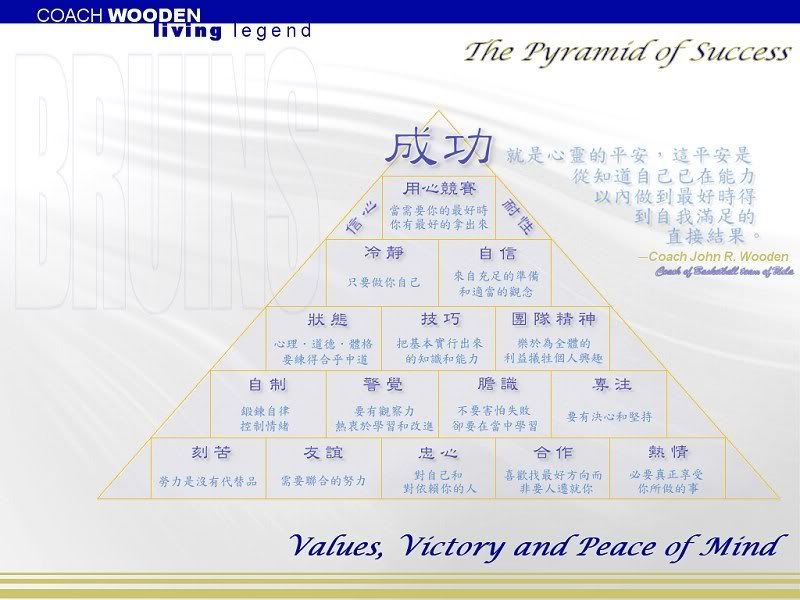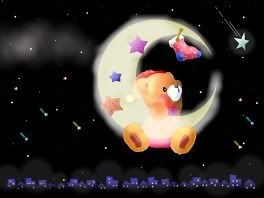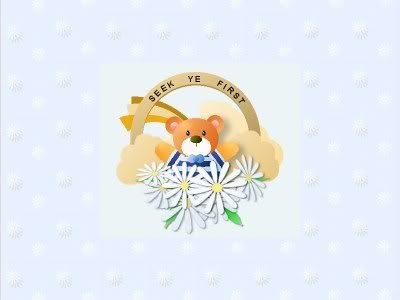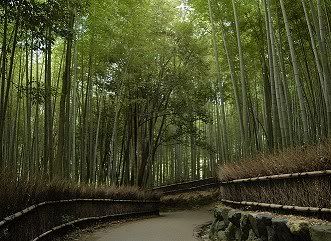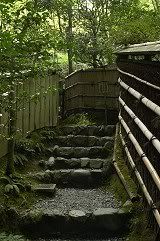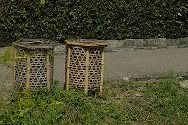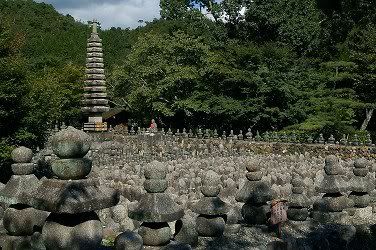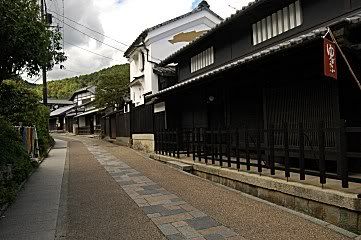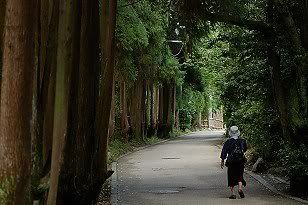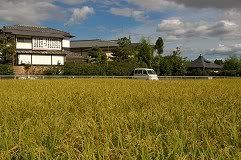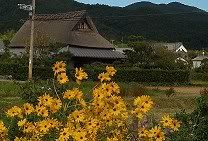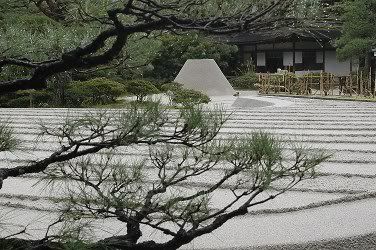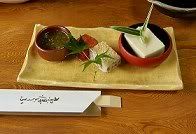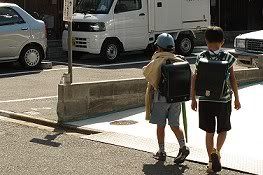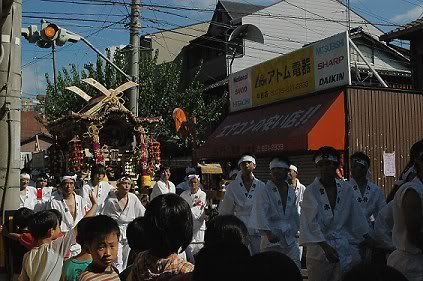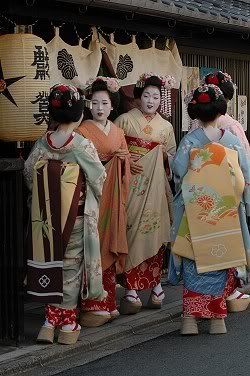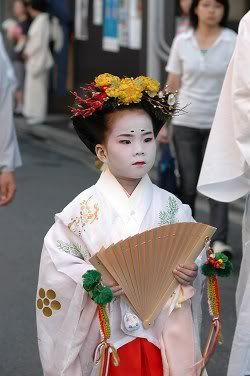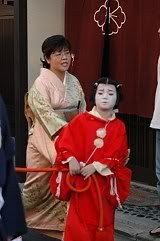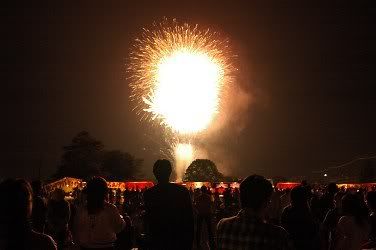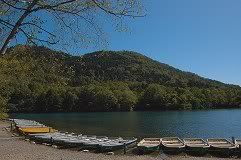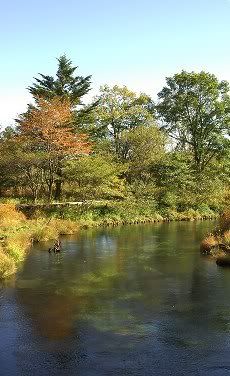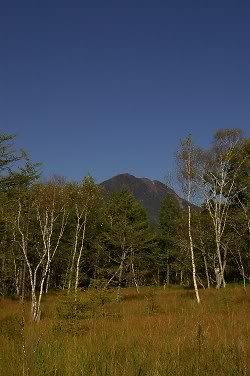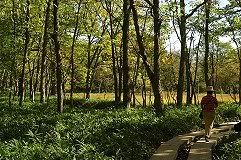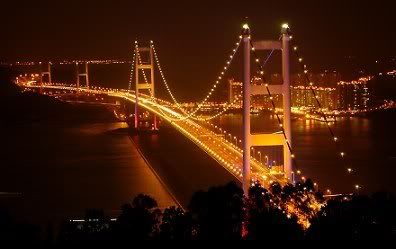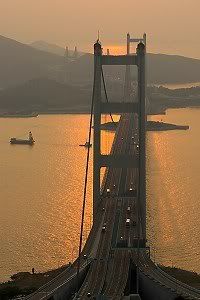
The part of mountain range extending from the left side of above photo is
here.
It was a cloudy morning, but the rain stopped. Sun might shine the city in the afternoon. I would visit Toshogu(東照宮) in the afternoon, so I shouldn't get too far from the city. I decided to go to Kirifuri Highland in the morning.
Last night, I couldn't go out to watch the moon because of a typhoon. Therefore I took mooncakes and okashi bought in Sendai to treat the master and his family of minshuku(民宿).
The minshuku I stayed in Nikko is run by a family. They try to make travellers feel the minshuku is like a home. My room in minshuku is very big. It would be a double room of other hotels I have ever stayed. It is a Japanese-style room. There's no lock on the door, but people I met there are very nice.
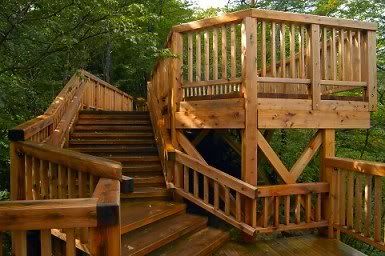
When I was leaving the minshuku towards Kirifuri, the master came to ask me where I would go that day. Then he suggested me to taste dango in Toshogu.I took a bus to the highland first, then walked down to Nikko City. After half an hour walk, I could see the mountain range on the west of Kirifuri. The range looks like a traditional oriental drawing and very beautiful. However, the photo of full view of the range is not clear after I resize it. Only a part of the view which was not blocked by electricity cables is posted at the top of this article.
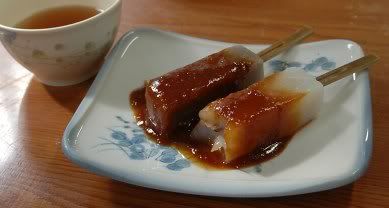
I walked to Nishisando(西参道) in the afternoon. There were a lot of elementary students having field trip with their teachers. Some of them walked from Tobu Nikko Station to Nishisando. Some teachers choose to take bus, but there were a lot of other visitors, therefore sometimes teachers asked staff at bus station to do them a favour in order to let all their students get on the same bus with their teachers.Those students were always excited during the field trip. Many of them had a booklet of assignment on their hands, and they visited the shines orderly. Smiles and langhters were always on their faces. However, on the way to Tokugawa's grave in Toshogu, a fat girl was too tired to climb the long stair, so she sat on the floor half way to the top of stair and cried. That was the position with a sign stood beside the steps and written "Life is long and with heavy burden. It is not good to be hurry." Kids are energetic and run to everywhere they go, so the girl got tired at the middle of stair. However it was ironic for her to cry under that sign. Her classmates tried very hard to cheer her up to stand up and continue the journey. After I visited the grave and returned to the stair, they were still trying.
As I always followed suggestion from local folks, I found the stall selling dangos outside Toshogu. I rested in the stall and enjoyed tea and food inside. Dango and other food taste excellent and cheap. Don't miss it when you visit Toshogu.
There is a food called "Yuba"(湯波) in Nikko. It is a roll of thin bean-curd. It tastes like bean-curd because it is bean-curd. Hmm...
The temperature at night was quite low in Nikko. The master's wife took me a clothes call "Haori" to put on the top of Yukata. It looks cute, I love it. I was very happy when they took it to me. The master also put a heating machine to my room. However, I didn't know how to operate it, so I never turned it on.
